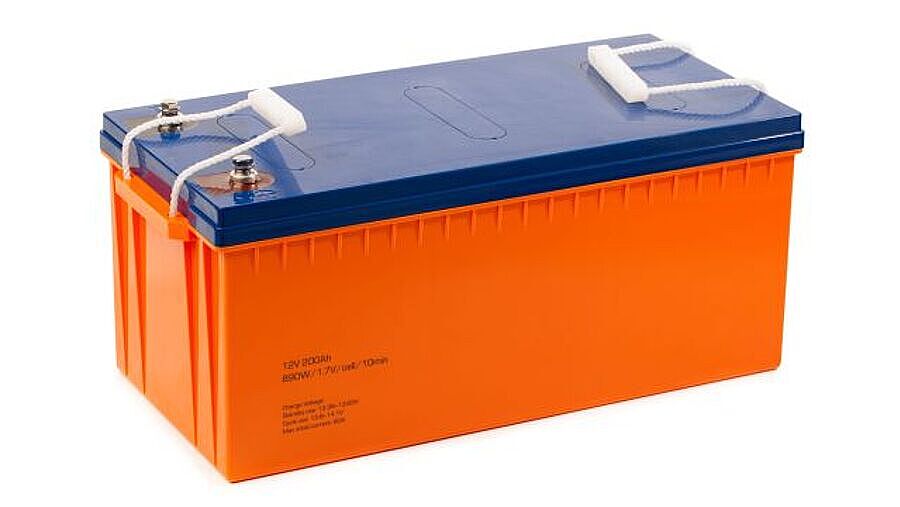5 guaranteed ways to destroy a boat battery
1. Use the wrong kind of battery.
The surest way to quickly kill a marine battery is to use the wrong kind. Marine batteries are manufactured in a variety of types and for different applications, so choosing the right one is vital. Due to their lower cost, the most common type of marine batteries are the flooded lead acid type (e.g. wet cell batteries). There are also gel batteries, Absorbent Glass Mat (AGM) batteries and spiral-wound battery derivatives; and lithium-ion marine batteries, although they tend to be more expensive.

Marine batteries are made to meet two applications. Starting batteries, also known as cranking batteries, provide a large jolt of amperes. As the names implies, they are typically used to start a marine engine and are built to recharge quickly.
Deep cycle batteries are designed to provide fewer amperes but are intended to operate for longer. They run the various electronics components on a boat and are meant to recharge more slowly. ‘Pure’ deep cycle batteries aren’t designed to be fully discharged. Instead, they have an ideal operating range (typically around 60 per cent) and shouldn’t be discharged below this level.
Dual-purpose batteries are also very common. Sometimes referred to as just marine batteries, they provide a balance between starting and deep cycle use.
A cranking battery repeatedly used for deep cycling can degrade in a matter of weeks, and vice versa, so choose the right one.
2. Overcharge and undercharge
Batteries need to be properly maintained in order to last. Essential to marine battery maintenance is proper charging so always use a charger that meets the manufacturer’s recommendations.
Regularly under-charging a battery erodes its performance and reduces its life due to a phenomenon called sulfation. This occurs when lead sulfate crystals form on the negative plates, impeding performance and reducing the battery’s ability to charge. Eventually this can render it unusable.
Excessive or incorrect overcharging can be equally damaging, particularly with AGM and gel batteries. Doing so can ‘cook’ a battery so it is essential to follow the manufacturer’s charging recommendations.
Thankfully, many readily available tools and accessories are available to keep your batteries in running order. For example, charging and maintaining a battery over long idle periods (during Winter or lock-downs) using a multistage charger will prolong its life.
3. Don’t maintain your battery
Marine battery maintenance means more than regular charging. Neglecting other forms of maintenance can also lead to deterioration.
Water loss, due to evaporation from heat and other chemical reactions, is common in wet cell batteries. It can rapidly shorten a wet cell battery’s life if left unchecked, so ensure the water level remains topped up (but not to overflowing). Only use distilled water, as impurities in tap water will accumulate inside the battery. Note that deep cycle batteries tend to lose water faster than starters.
External components should also be inspected. Check that the lead posts don’t show signs of coming off (they can be weekend if a terminal was forcefully connected). A gentle dose of grease, lanolin or Vaseline can stave off corrosion on exposed metal terminals. Once a year, clean out the battery box, check for signs of leaks and corrosion, check the vent is clear, and inspect the tie-downs.
4. Place the battery in the wrong spot
Marine batteries differ to car batteries in that they are meant to operate in an environment that will be subjected to strong vibrations.
Even so, a poorly installed setup can suffer from excessive vibrations, which in turn loosens the internal workings, eventually weakening the battery.
The battery box (especially on smaller boats) should be located where it won’t be adversely affected by wave pounding and engine vibrations. It should also be situated in a location where it won’t get flooded by seawater. Wet call batteries should also be situated in a location with adequate ventilation.
5. Buy the cheapest possible marine battery
As with so many things in life, you get what you pay for with boat batteries. As mentioned, marine batteries need to fulfil several functions so the temptation may be to buy an automotive battery. While not contrary to any regulations, using a battery that is less likely to resist vibrations or which can’t handle steep discharge cycles puts you at risk.
Purchasing a second-hand battery is generally inadvisable. You don’t know its history and it’s probably not covered by the manufacturer’s warranty.
